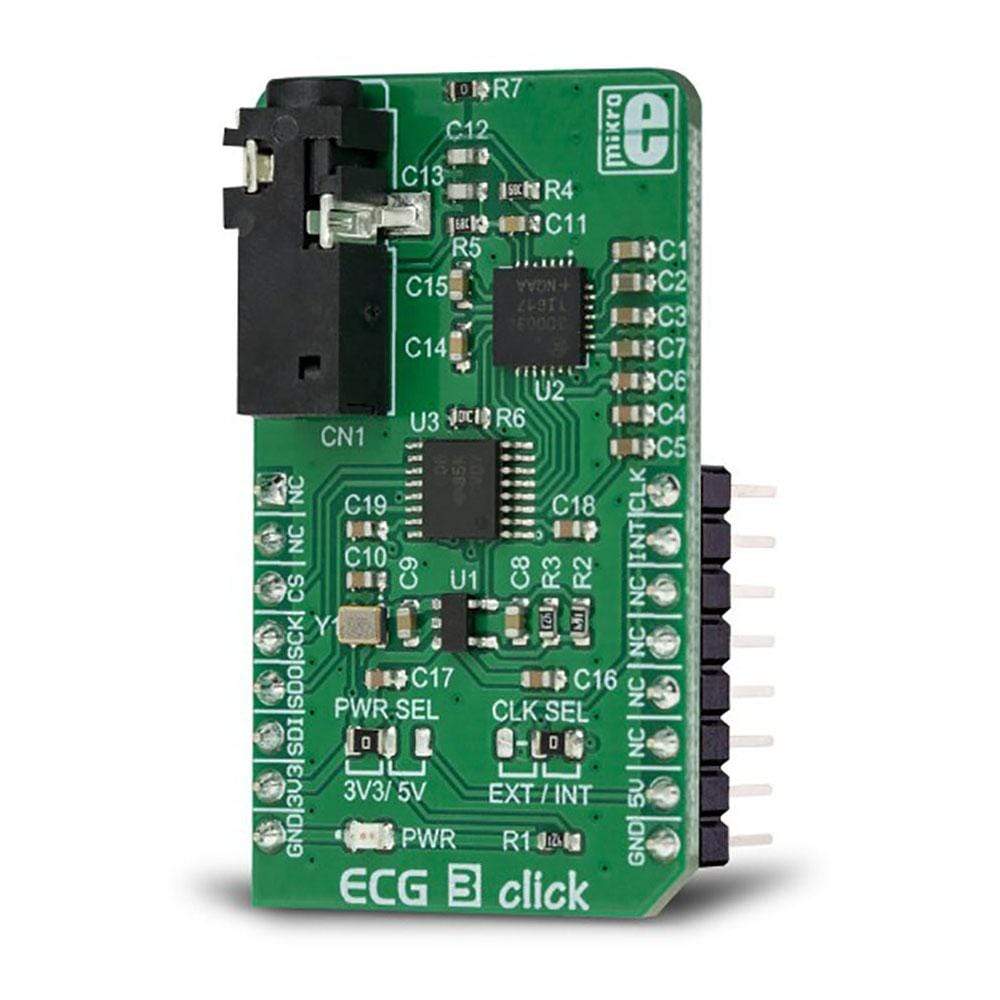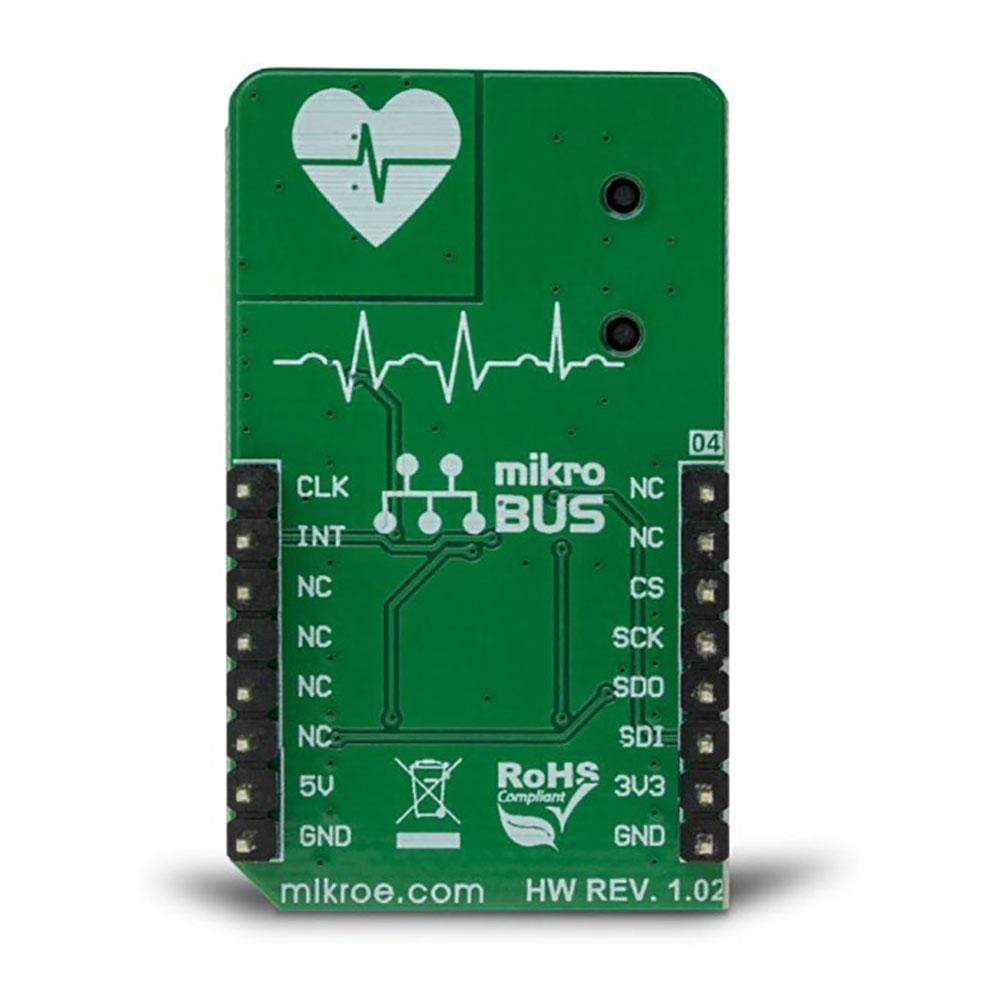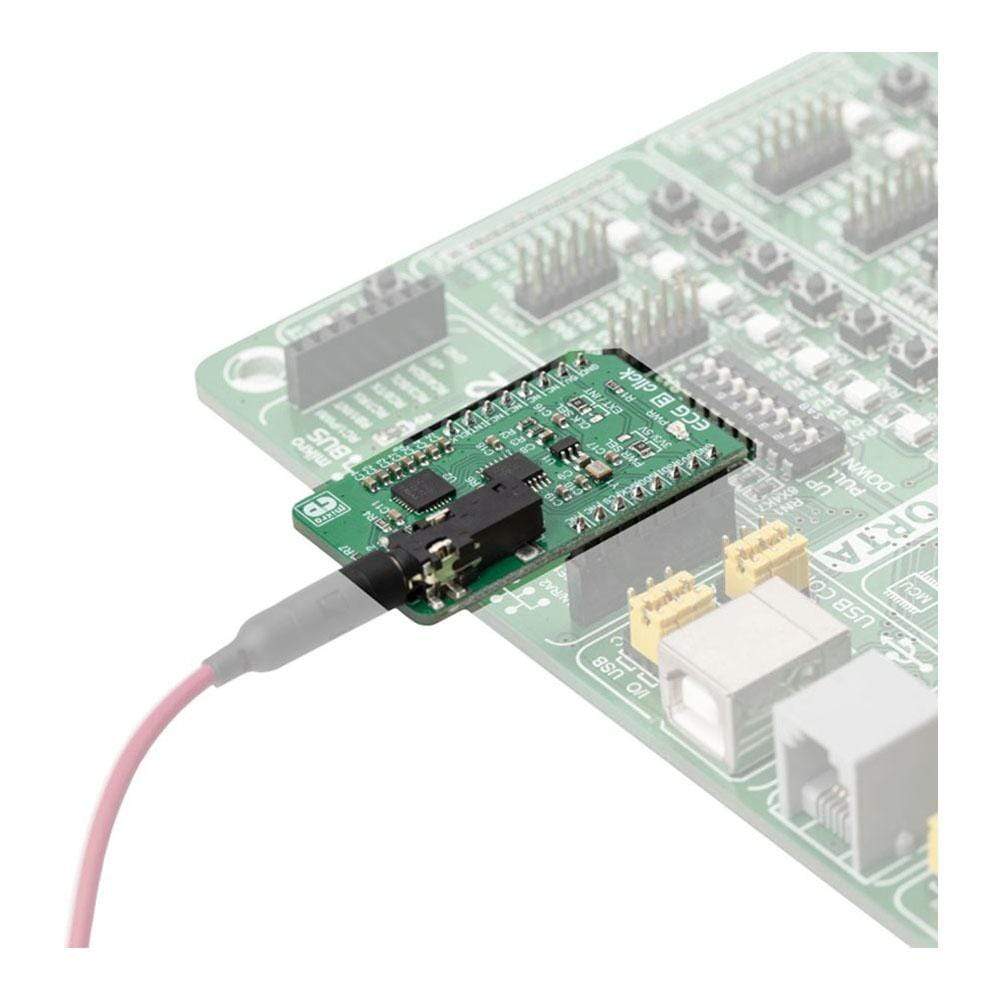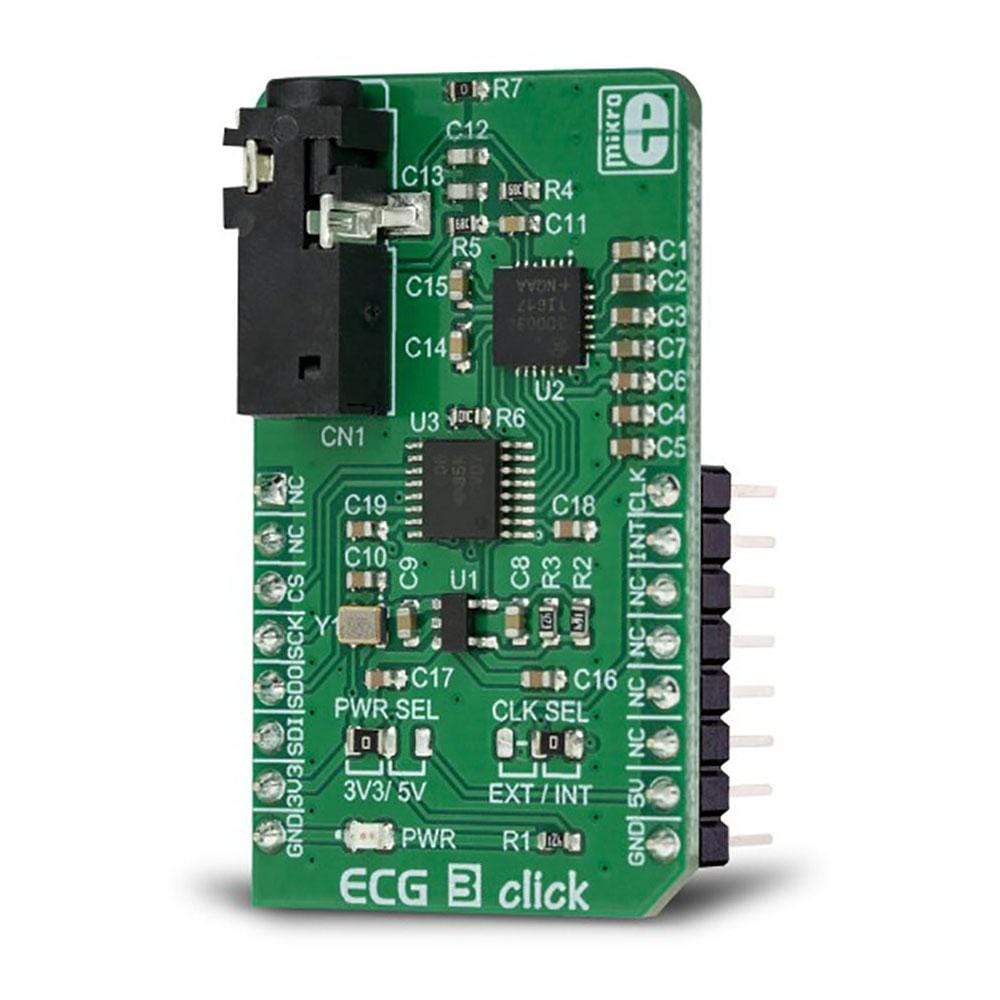
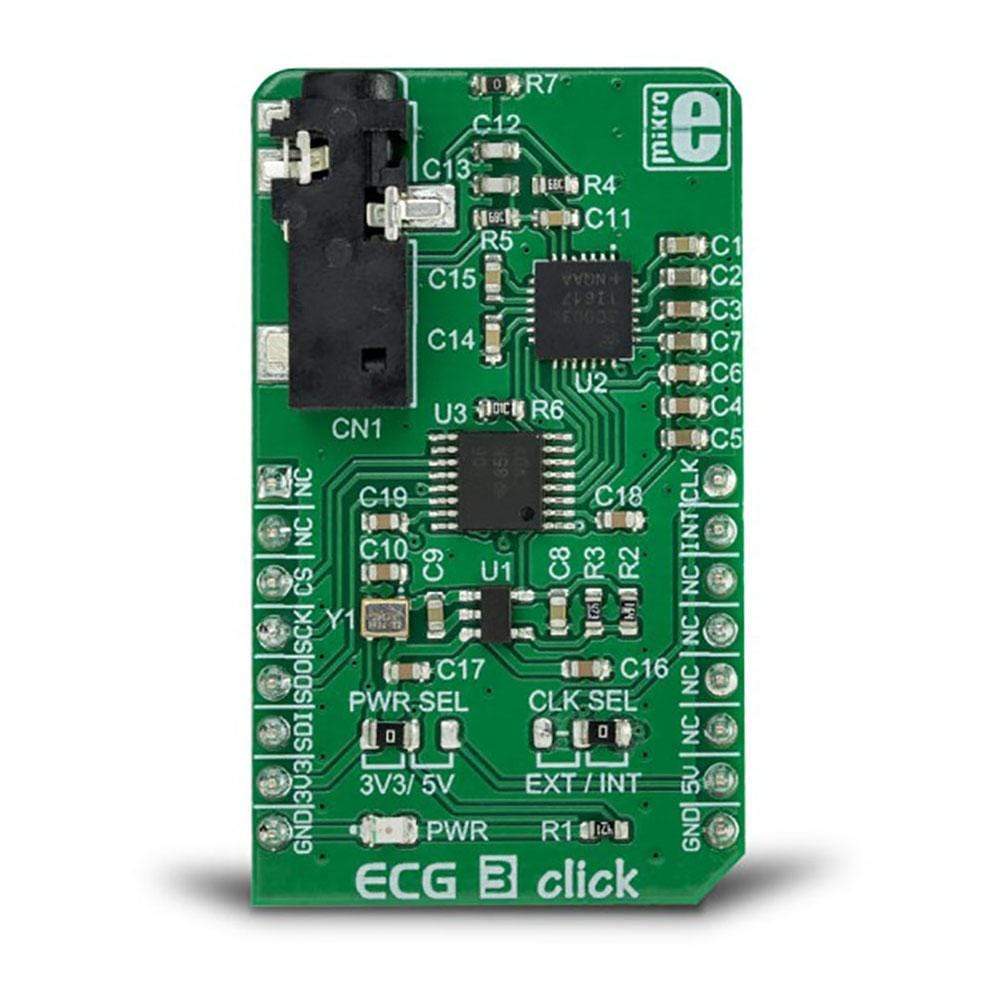
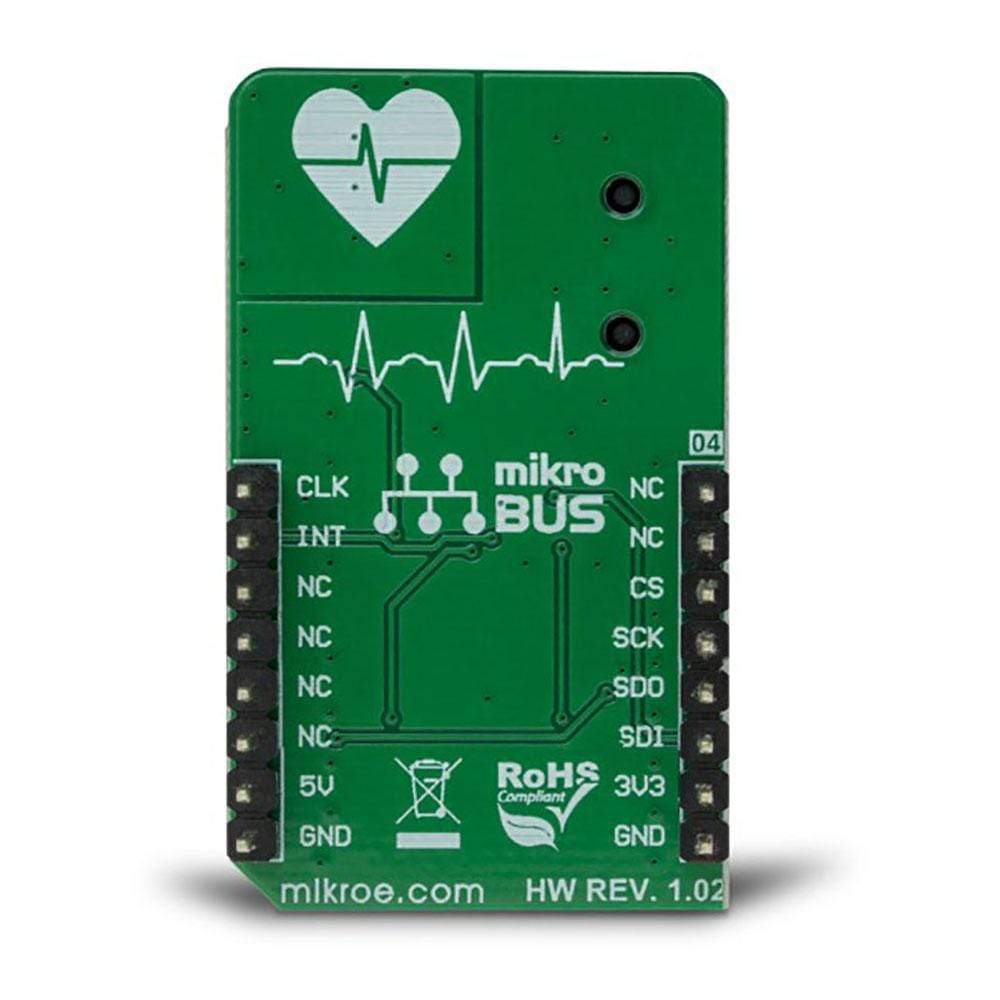
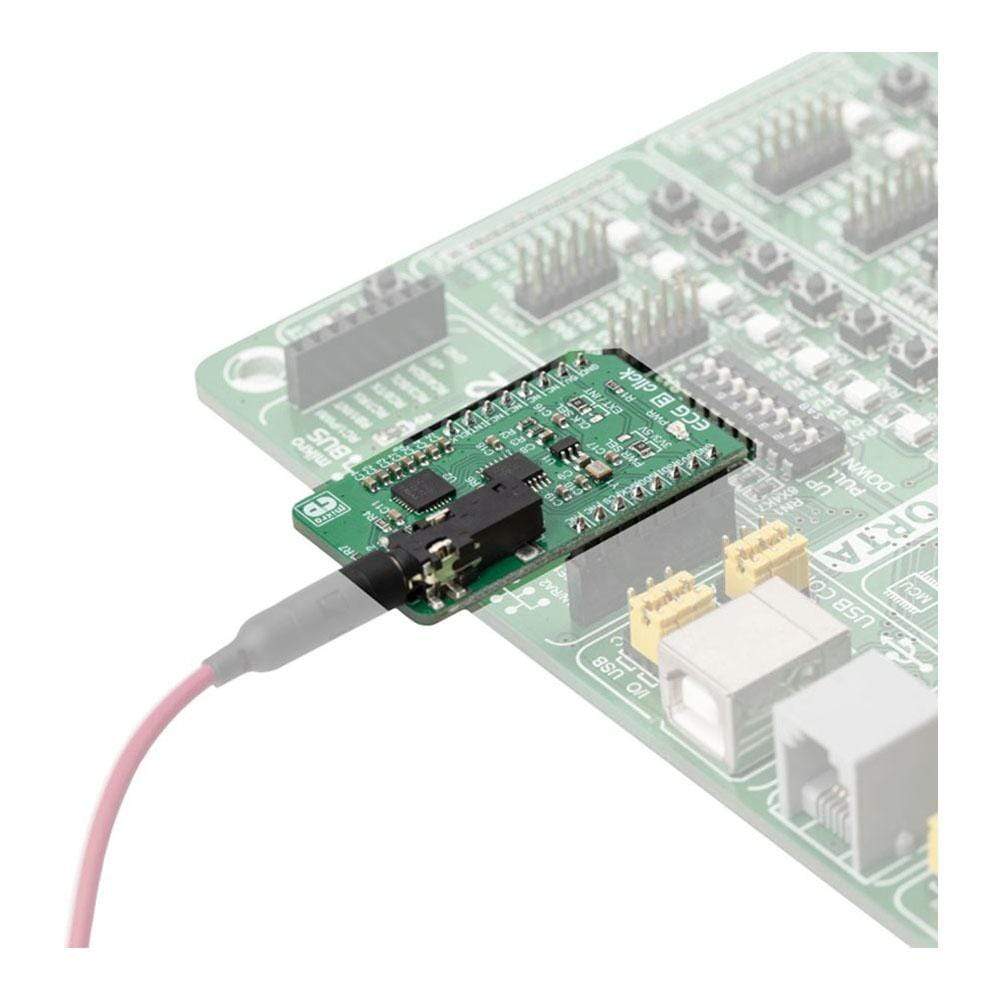
Overview
The ECG 3 Click Board™ is a complete solution for ECG and HR application development, utilizing a specialised IC with a clinical-grade analogue front-end (AFE). The Click Board™ uses the MAX30003 IC, an ultra-low-power, single-channel bio-sensor, which features a wide range of different options, making it an ideal solution for the development of heart rate and ECG monitoring applications, fitness applications, for the ECG bio-authentication, and similar applications related to heart monitoring.
The ECG 3 Click Board™ is also equipped with a 3.5mm electrodes connector, making it ready to be used out of the box.
Downloads
Das ECG 3 Click Board ™ ist eine Komplettlösung für die Entwicklung von EKG- und HR-Anwendungen und verwendet einen speziellen IC mit einem analogen Frontend (AFE) in klinischer Qualität. Das Click Board™ verwendet den MAX30003 IC, einen extrem stromsparenden Einkanal-Biosensor, der über eine Vielzahl unterschiedlicher Optionen verfügt und damit eine ideale Lösung für die Entwicklung von Anwendungen zur Herzfrequenz- und EKG-Überwachung, Fitnessanwendungen, für die EKG-Bioauthentifizierung und ähnliche Anwendungen im Zusammenhang mit der Herzüberwachung ist.
Das ECG 3 Click Board™ ist außerdem mit einem 3,5-mm-Elektrodenanschluss ausgestattet und kann daher sofort verwendet werden.
| General Information | |
|---|---|
Part Number (SKU) |
MIKROE-3273
|
Manufacturer |
|
| Physical and Mechanical | |
Weight |
0.019 kg
|
| Other | |
Country of Origin |
|
HS Code Customs Tariff code
|
|
EAN |
8606018714018
|
Warranty |
|
Frequently Asked Questions
Have a Question?
Be the first to ask a question about this.

